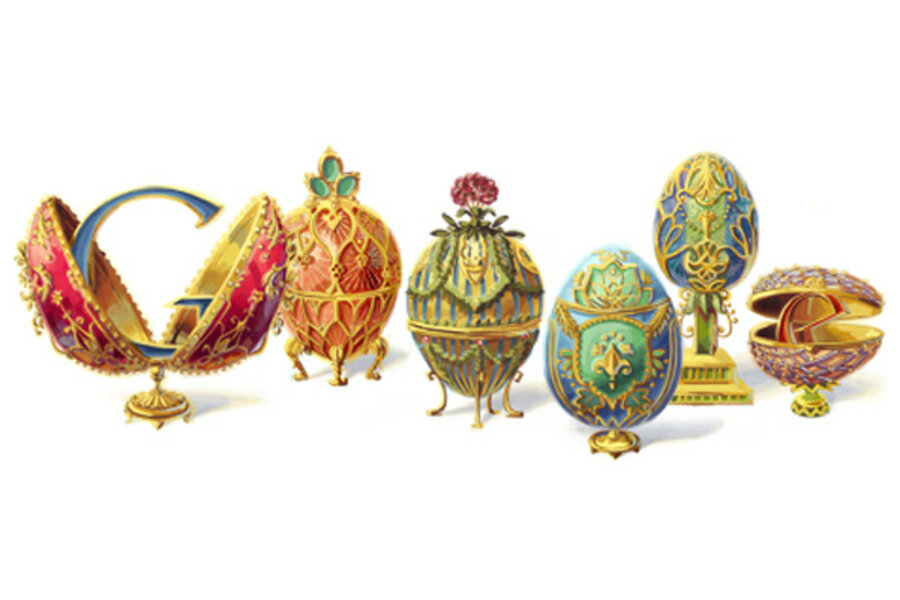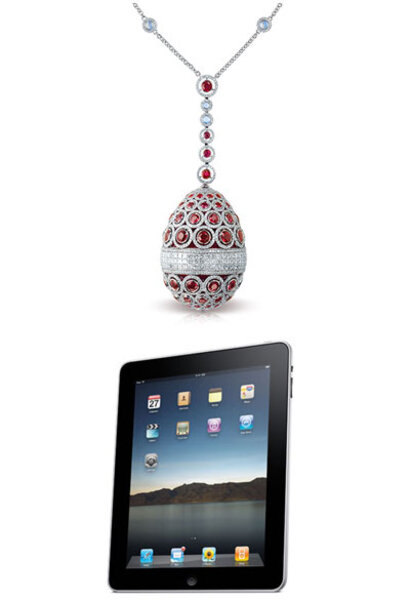How Peter Carl Fabergé is the Steve Jobs of bejeweled eggs
Loading...
It may seem like a stretch to compare the intricately ornamented eggs crafted by Peter Carl Fabergé to the sleekly minimalist designs of the late Apple CEO Steve Jobs, but the two men have a lot in common.
Like Jobs, Fabergé, whom Google is celebrating Wednesday with a bejeweled logo, took an idea that had already existed and made it his own. Humans have been decorating eggs for millenia – the earliest examples, uncovered in a cave in South Africa, are some 60,000 years old – but it took Fabergé to elevate the practice into an art form that will forever be associated with his name. Similarly, Jobs didn't invent the PC, the mp3 player, the smartphone, or the tablet computer, but these devices would be radically different today without his influence.
Both men were personally eccentric, particularly in their clothing choices. Once he settled on his outfit of a black mock turtleneck, Levi’s 501 jeans, and New Balance sneakers, Jobs never deviated from it. Fabergé favored tweeds, and was known for traveling without any luggage, instead opting to buy everything he needed once he arrived at his destination.
Fabergé and Jobs were each known for their brusque personalities. Fabergé was notorious for upbraiding his craftsmen when he thought their work failed to meet his standards. Jobs could reduce his employees to tears. In 2008, after the launch of the cloud-based subscription service MobileMe sputtered, he gathered the MobileMe team into his office and said, "You've tarnished Apple's reputation. You should hate each other for having let each other down." Then he disbanded the entire team.
But perhaps the greatest thing the two men had in common were their love of hidden surprises. Fabergé's first Easter gift to the Tsar's family in 1885 was an egg whose two halves would open to reveal a gold yolk, which would open to contain a golden hen with ruby eyes. The hen's tail contained a hinge that would open it up to reveal a gold and diamond replica of the imperial crown, and inside the crown was a ruby pendant.
Fabergé would continue to include secret compartments in each of his annual Easter gifts to the Tsar, and the tradition continues to this day. The ruby and diamond pendant in the image above contains a hidden diamond drawer containing a matching pendant.
As for Jobs, the very first Mac, the 128K, could be cracked open to reveal the signatures of the engineers at Apple's Macintosh Division on the inside of the case. On modern Macs, you can diminish a window in slow-mo by holding down the shift key as you click the minimize button. And of course the iPhone assistant Siri is widely known for her wisecracks. Among programmers, these hidden gems are known as Easter eggs.









